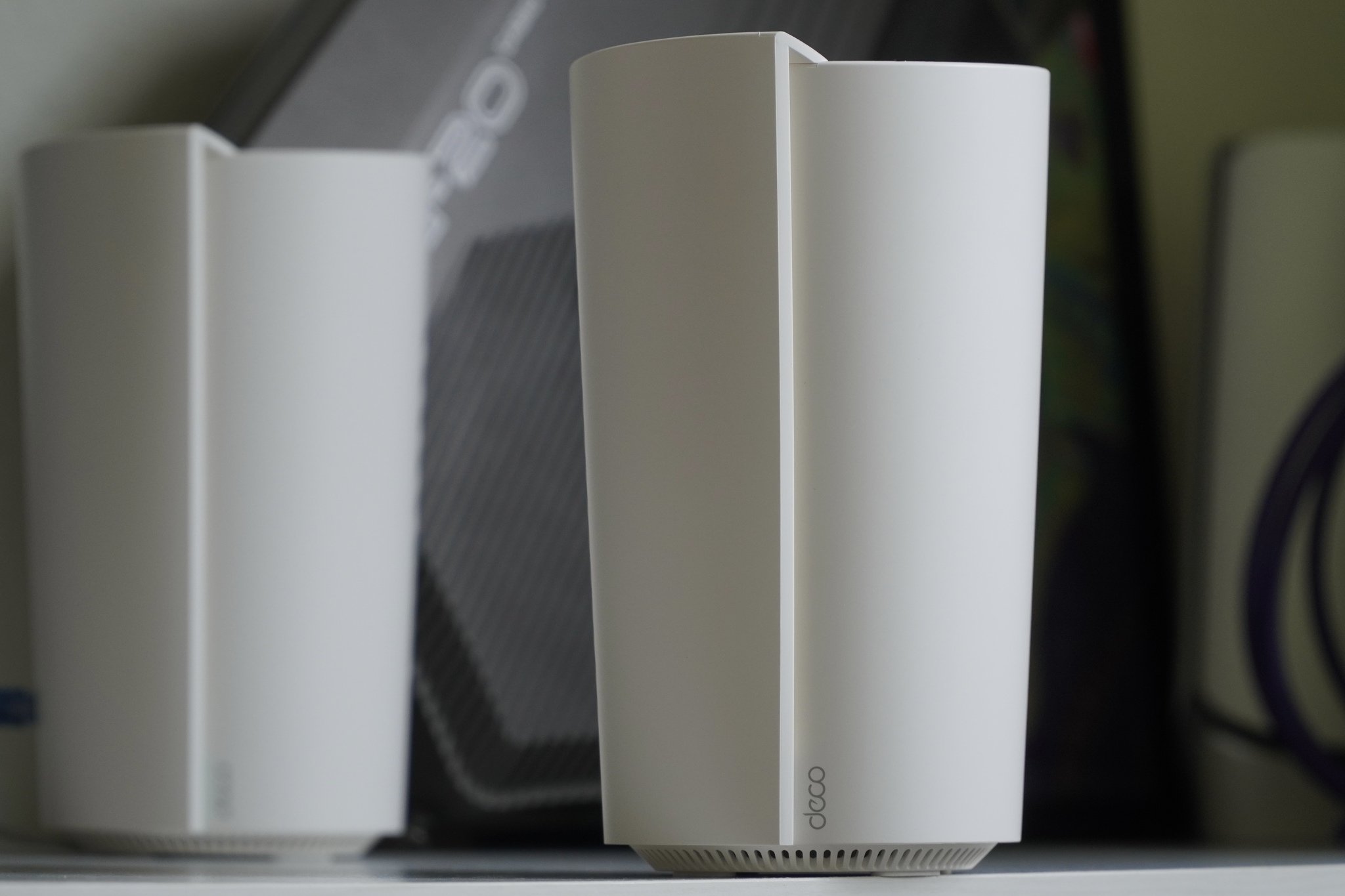Android Central Verdict
Bottom line: With a fast tri-band Wi-Fi 6 connection working at up to AX6600 speeds and 2.5Gbps Ethernet on each node, this mesh system is designed for speed. The Deco X90 completes the package with solid parental control options and a mesh connection that's always working to find the best connection possible.
Pros
- +
Incredible mesh speeds
- +
Great coverage with AI-driven mesh
- +
2.5Gbps Ethernet on both nodes
- +
Solid parental control options
Cons
- -
2.4GHz capacity is weaker than the competition
- -
Only two Ethernet ports per node
- -
Lacks advanced controls and information
Why you can trust Android Central
The TP-Link Deco X90 is without a doubt one of the fastest mesh systems I've ever used with a tri-band Wi-Fi 6 connection adding up to AX6600 speeds. This Deco also has an attractive design that looks great in just about any home, with interlocking curves that remind me a bit of expressionist architecture, a follow-up to Art Deco. The nodes are also compact for their power making them easy to place.
With coverage of up to 6,000 square feet, the Deco X90 is a top contender for those looking to cover a large home or even a property with detached buildings. The Deco X90 gets even more powerful as you add nodes thanks to an AI-driven mesh technology that learns from your connected devices moving between nodes as well as neighboring connections. TP-Link notes that this information is all stored locally and is not uploaded to the cloud.
The raw power of the equipment with its fast AX6600 Wi-Fi 6 connection and the intelligent software finding the best path to each node makes this one of the fastest and most consistent mesh systems I've ever used. This Deco mesh system is easily one of the best Wi-Fi 6 mesh systems you can get.
TP-Link Deco X90: Price and availability
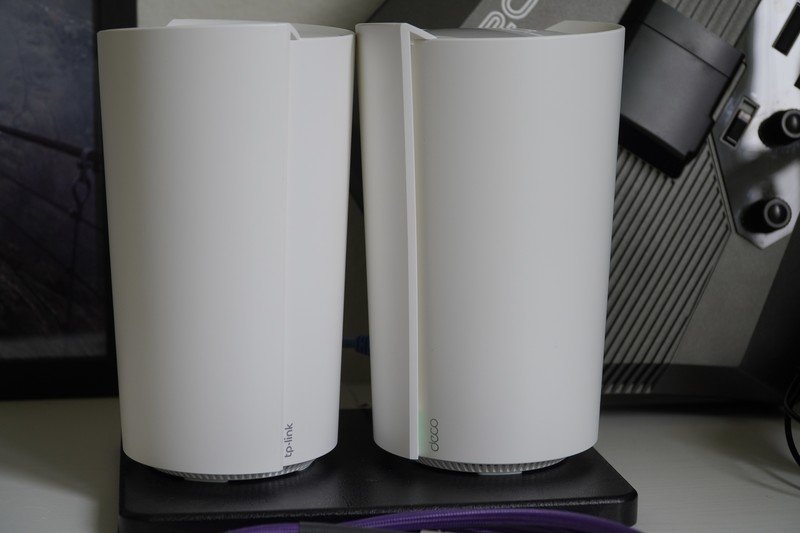
The TP-Link Deco X90 was first available in late April 2021 in the United States. You can buy this mesh system in several other countries worldwide, including Canada and the UK. In the U.S., the Deco X90 system has a suggested price of $499.99 and is available from retailers Amazon and Best Buy. If you want to pick your Deco up from Best Buy, you will likely need to order it online and have it sent to the store of your choosing, as this product isn't showing up on shelves yet.
There is also a Deco X5700 available exclusively at Costco. This router is slightly slower on the higher 5GHz band but, in most cases, should perform in a very similar way. This router also has the same AI-driven mesh connection as the AX90. Most people wouldn't notice a difference between the two models in day-to-day usage.
TP-Link Deco X90: What you'll like
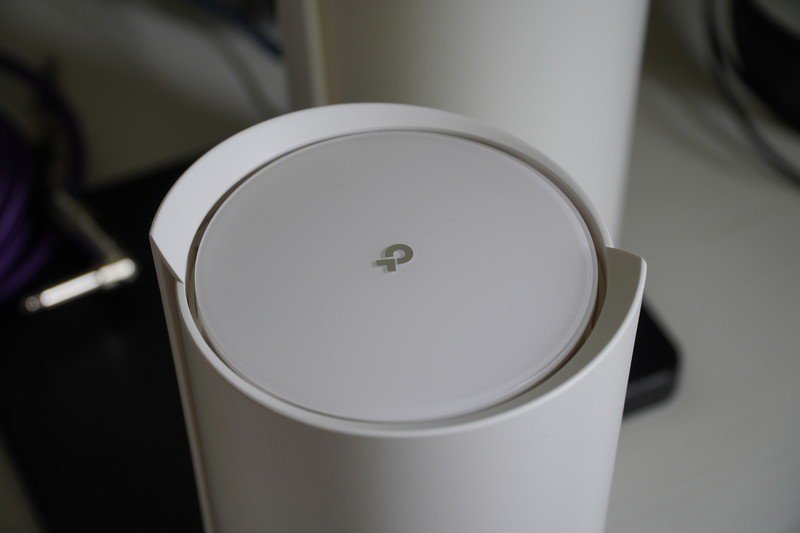
When I reviewed the TP-Link Archer AX90, I was blown away by the performance and was eager to see if the Deco mesh version was able to deliver the same kind of experience. The TP-Link Deco X90 delivers the same kind of speeds in a more compact and attractive housing with more consistent coverage.
The Deco X90 is an AX6600 tri-band Wi-Fi 6 router. This means that the Deco splits its total 6.6Gbps wireless connection three ways with 574Mbps at 2.4GHz, 1201Mbps on the lower 5GHz band, and 4804Mbps on the higher 5GHz band. The top band uses a 160MHz wide channel to help achieve its higher speed. Regardless of these raw numbers, your Wi-Fi 6 devices will more than likely max out at 1201Mbps with a few high-end PCs capable of 2402Mbps.
The Deco X90 supported my Desktop's Intel AX210 at a full 2402Mbps connection speed without issue. Similarly, my Wi-Fi 5 MacBook Pro had a connection speed of 1300Mbps, which is its top speed. Smartphones like the tested Galaxy S20+ connected at 1201Mbps, with the Wi-Fi 5 LG G8 connected at 867Mbps. Long story short, the Deco X90 is not a bottleneck.
I tested the Deco X90 in three locations in my home with three devices. The Galaxy S20+ and iPhone 11 Pro support Wi-Fi 6, while the LG G8 uses Wi-Fi 5. The difference in speed between Wi-Fi 5 and Wi-Fi 6 becomes more apparent as you move further from the nodes, though, for all tests, the phones all had a strong connection. My internet connection from Cox is 500Mbps down with 10Mbps. All test points achieved the full upload speed easily. Ping times averaged under 15ms, which is normal for this connection.
TP-Link Deco X90 speed tests (5GHz):
| Location | Living room(main router) | Front room(Node) | Bathroom |
|---|---|---|---|
| Galaxy S20+ | 561 Mbps553 Mbps | 523 Mbps519 Mbps | 501 Mbps594 Mbps |
| LG G8 (Wi-Fi 5) | 532 Mbps495 Mbps | 490 Mbps389 Mbps | 333 Mbps411 Mbps |
| iPhone 11 Pro | 539 Mbps499 Mbps | 536 Mbps489 Mbps | 321 Mbps490 Mbps |
TP-Link claims the Deco X90 can cover up to 6,000 square feet with its two nodes. Keep in mind that you might see significantly less coverage if your home has a lot of interference, such as concrete or brick walls. Even things like HVAC systems can cause interference, which is a big deal if you live in a hot area like I do. Still, coverage held up even when the air conditioning was running, though turning the system off and repeating the bathroom test returned slightly improved results.
If you need more coverage, you can add more Deco nodes to your system. TP-Link maintains compatibility between all Deco nodes, so if you have an older Deco system you can use it to add a bit more coverage. You can also choose to add slower Decos where speed isn't as important. Thanks to its tri-band connection, the TP-Link Deco X68 is a solid choice to expand this mesh. Still, you could also add more Deco X90 nodes for maximum performance.
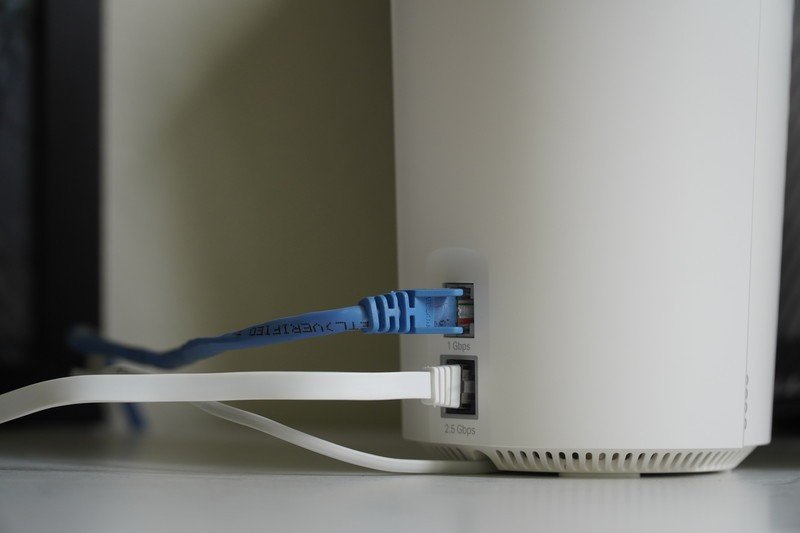
Each Deco node is equipped with two Ethernet ports, with one capable of 2.5Gbps. Both ports can be used as WAN or LAN and will automatically switch. In fact, it only took a few seconds for the network to recover when I moved my WAN connection from one to the other. Furthermore, you can use Ethernet as a mesh backhaul if your wireless link is struggling. This includes the 2.5Gbps ports, which I was able to use as a mesh link; however, the software only reported that the link was Ethernet and not the speed. Unfortunately, I don't have enough multi-gig Ethernet devices to fully test the link speed, but this is a pointless endeavor for most people anyway.
Most people will be sticking to a wireless mesh link, and with TP-Link's new AI-drive mesh technology, this will likely be the most performant option. The Deco X90 constantly collects data about the strength of your device connections as well as neighboring signals. With this data, the X90 can optimize its connection actively if something like a microwave weakens the mesh link. It can also react to changes in the environment, such as your neighbors upgrading their routers.
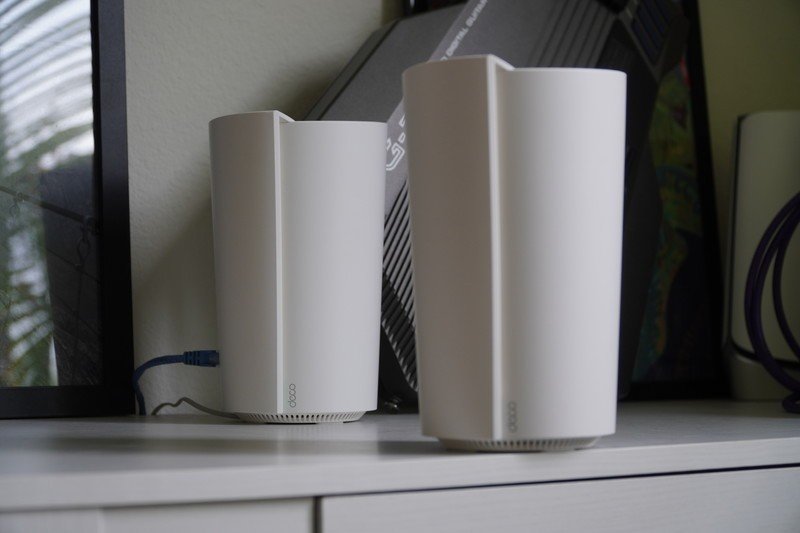
The AI is also able to improve switching by determining exactly when it makes the most sense to move your connection to the next node. In my testing, my devices always seemed to find their way to the closest node. TP-Link also notes that this AI data is only stored locally, so you don't need to worry about your data getting uploaded to random servers. It's all processed and stored on your Deco X90 router.
TP-Link's Deco app has everything you need to get your mesh system set up, with clear instructions and a simple interface. Once set up, you'll be able to see your connected devices and which node they're on. You'll also be able to change a few basic settings, such as your password and guest network settings. HomeShield offers several free options, such as parental controls with content filtering. The parental controls can even be set up with profiles, so you can quickly change settings for all of that profile's devices.
The advanced settings really aren't. You get the most important options such as port forwarding, DHCP settings, IPV6, and operation modes, but if you were looking to customize your settings like in a more traditional router, you'll be disappointed. Still, for many people with this mesh, simplicity is a welcome feature.
TP-Link Deco X90: What's not good
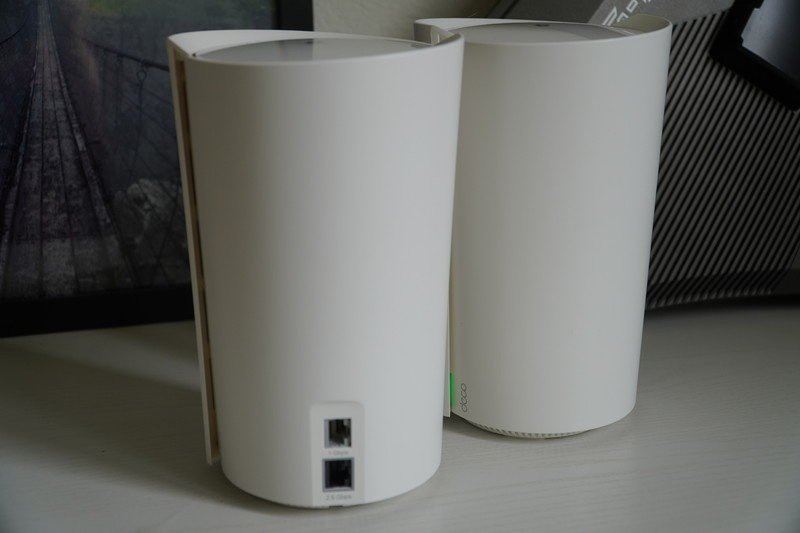
HomeShield is a replacement for TP-Link's HomeCare software that includes parental controls and network security features. The limited free version comes with parental controls, including content filtering, URL filtering, and a bedtime setting, though setting time limits and offtime is restricted to the pro version. If you're looking for QoS (quality of service), it's in the HomeShield tab as well for free. If you want real-time protection, you'll need to sign up for HomeShield Pro, which comes in at $5.99 per month or $54.99 per year.
It's worth keeping in mind that the 2.4GHz performance of this router is a bit lower than some others, at just 574Mbps total. Most recent devices support 5GHz Wi-Fi, but some lower-cost or compact devices only include 2.4Ghz support. This will be most apparent with smart home devices. Still, for the most part, these devices will be more than usable as long as you don't try to run dozens of HD cameras connected to a single node.
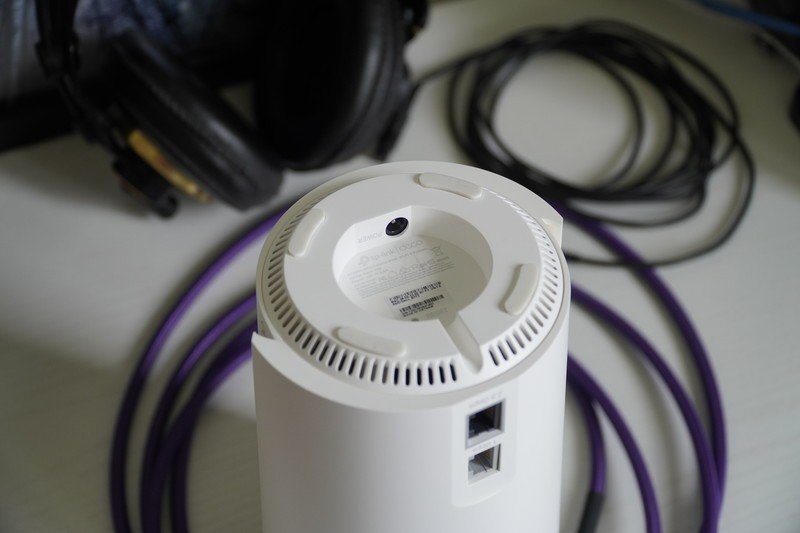
One last thing to consider is Ethernet. The Deco X90 only comes with two per node, and one will always be used by the internet connection. This means that at any one time, you'll only be able to connect three wired devices without a switch. The majority of other meshes in this speed category have three or four on the base router at the very least. If you're already running your wired devices from a switch or are ready to go totally wireless, this may be a non-issue to you.
TP-Link Deco X90: Competition
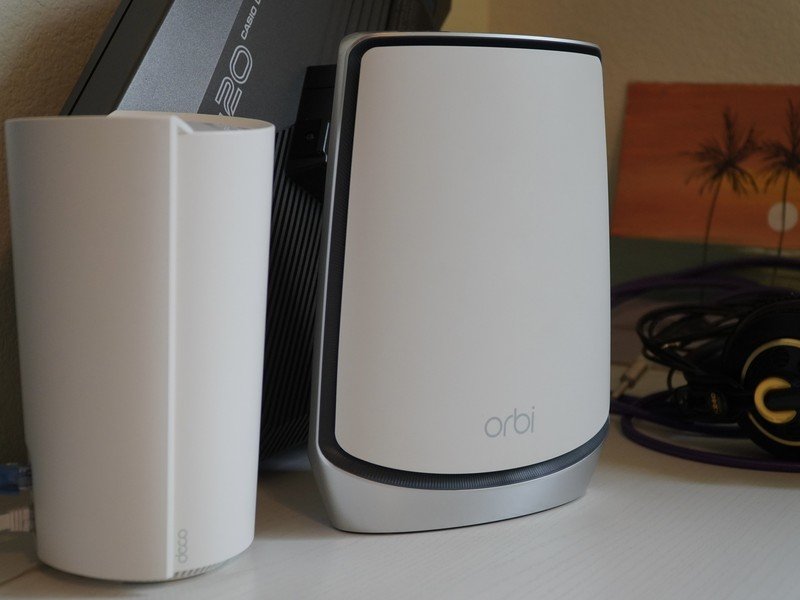
One of the first mesh systems to come to mind is the Netgear Orbi RBK852 with an AX6000 tri-band connection, 2.5Gbps Ethernet, and 5,000 square feet of coverage. The Orbi is set up differently, however, with 2.4Gbps on the 2.4GHz band plus 2.4Gbps at 5GHz for devices with a dedicated 1.2Gbps mesh link band. The RBK852 is very powerful but will likely go underutilized by most clients as 5GHz replaced 2.4GHz for the majority of connections. The Orbi is also more expensive at $700 for a router and satellite package.
The Asus ZenWiFi AX (XT8) is perhaps the Deco X90's closest competitor with an identical AX6600 tri-band connection. The Asus pulls ahead thanks to including three open Ethernet ports per node as well as offering a more advanced security solution with AiProtection Pro that included parental controls. The ZenWiFi is also compatible with Asus AiMesh routers allowing easy expansion with a large number of supported Asus routers. The Asus does have slightly less coverage at 5,500 square feet, though it's also cheaper at just under $450.
TP-Link Deco X90: Should you buy it?
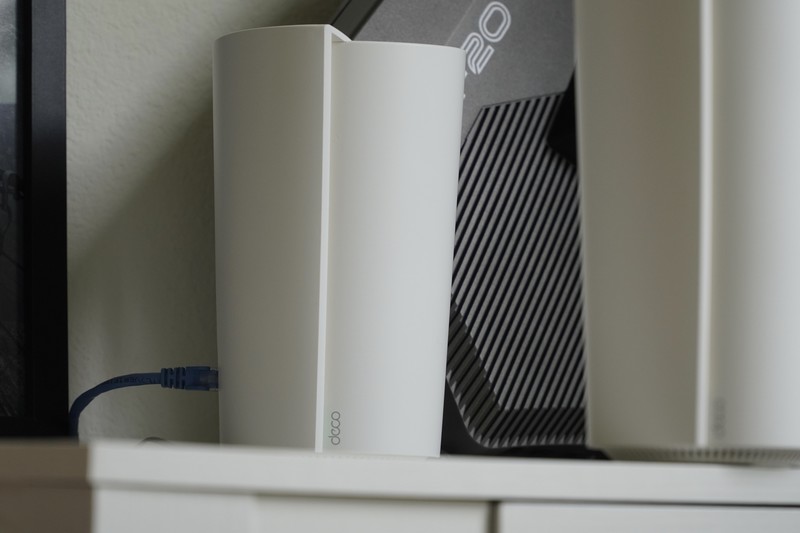
You should buy this if ...
- You have Wi-Fi 6 devices
- You need great coverage in a challenging house
- You need multi-gig speeds
- You want parental controls included for free
You shouldn't buy this if...
- You have a lot of devices that rely on 2.4GHz
- You need to connect a lot of wired devices
- You want or need advanced controls and information
If you're looking to get the most out of your Wi-Fi 6 devices without giving up the coverage of a mesh system, the Deco X90 delivers both great speeds and coverage. It's also a great fit for a home with a challenging layout, such as one with internal brick or concrete walls. This system will also work great for a family thanks to its huge capacity and parental control software. While it's not the most advanced system we've seen, it has all of the basics most people need.
Still, this router isn't a great fit for someone that still uses a lot of older devices, especially the large number of smart home accessories that rely on 2.4GHz Wi-Fi. The Deco X90 has roughly half of the 2.4GHz speed available on systems like the Orbi RBK852. Beyond that, wired connectivity is low compared to the competition, with only two Ethernet ports per node, and advanced users looking to get under the hood will find the available settings to be lacking.
4.5 out of 5
Overall, the TP-Link Deco X90 is an incredibly fast mesh system that will keep up with just about anyone. If you need this kind of speed and coverage, the Deco X90 is a solid choice with some of the best coverage in the category. Still, some will find the lack of advance controls to be a deal-breaker. For most people, however, getting this mesh setup is quick and easy and will deliver gigabit speeds across a huge home with ease. With the TP-Link Deco X90, you can eliminate your home network bottlenecks and just focus on using the internet.
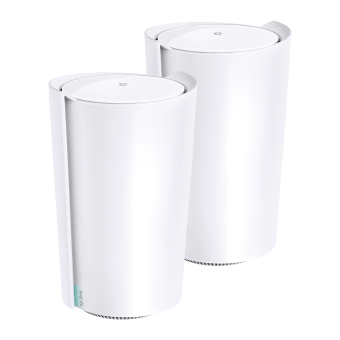
TP-Link Deco X90
Bottom line: The TP-Link Deco X90 delivers consistently fast speeds, with all of my devices getting great speeds all around my home. The AX90 also comes with HomeShield parental controls that offer a solid set of options for free with more advanced in-depth controls available with a subscription.
When Samuel is not writing about networking or 5G at Android Central, he spends most of his time researching computer components and obsessing over what CPU goes into the ultimate Windows 98 computer. It's the Pentium 3.
